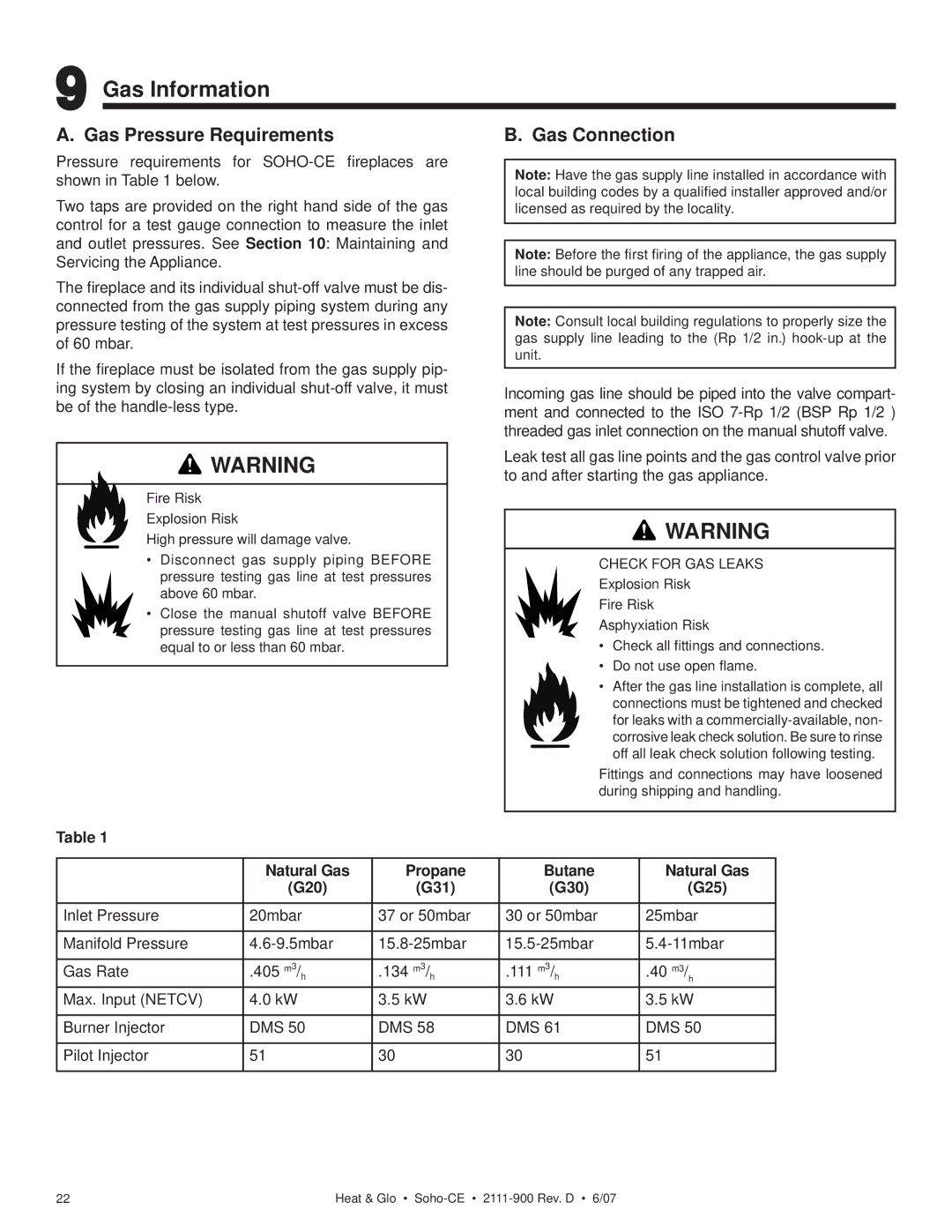SOHO-CE specifications
Hearth and Home Technologies (HHT) has long been a leader in the design and manufacturing of innovative hearth products, and their SOHO-CE model is no exception. This sleek and modern electric fireplace represents a perfect synthesis of aesthetic appeal and functional engineering, specifically tailored for small office/home office (SOHO) settings.One of the standout features of the SOHO-CE is its Clean Edge design, which allows for a seamless installation that blends effortlessly into any room. This contemporary electric fireplace has a minimalist frame available in various finishes, making it versatile enough to complement different interior styles, from modern to rustic. Its elegant look is well-suited for both residential and commercial spaces, providing an inviting ambiance that enhances the room's overall atmosphere.
The SOHO-CE employs state-of-the-art LED technology to create realistic flame effects. These flames can be adjusted to suit individual preferences, giving users control over the intensity and color. This customization is essential in creating the ideal mood for any occasion, whether it’s a productive workday or a cozy evening at home. In addition, the electric fireplace boasts a safe and efficient heat source with adjustable heat settings, ensuring comfort without compromising safety.
Smart technology integration is another significant characteristic of the SOHO-CE. It can be controlled via a user-friendly app, allowing for remote operation right from a smartphone or tablet. This feature is particularly beneficial for those who want to set the fireplace to a specific schedule, ensuring their space is warm and inviting upon arrival.
In terms of energy efficiency, the SOHO-CE stands out with its eco-friendly operation. As an electric fireplace, it eliminates the need for venting and reduces the emission of pollutants, making it a responsible choice for the environment. It also offers the convenience of heating only when necessary, reducing energy consumption.
Durability is built into the SOHO-CE’s design, featuring high-quality materials that ensure longevity and performance. This electric fireplace is also easy to maintain, with no need for chimneys or flue cleaning. Overall, Hearth and Home Technologies' SOHO-CE is a remarkable addition to any SOHO setting, marrying functionality with style for an exceptional user experience. Whether for work or leisure, this electric fireplace elevates any space.

